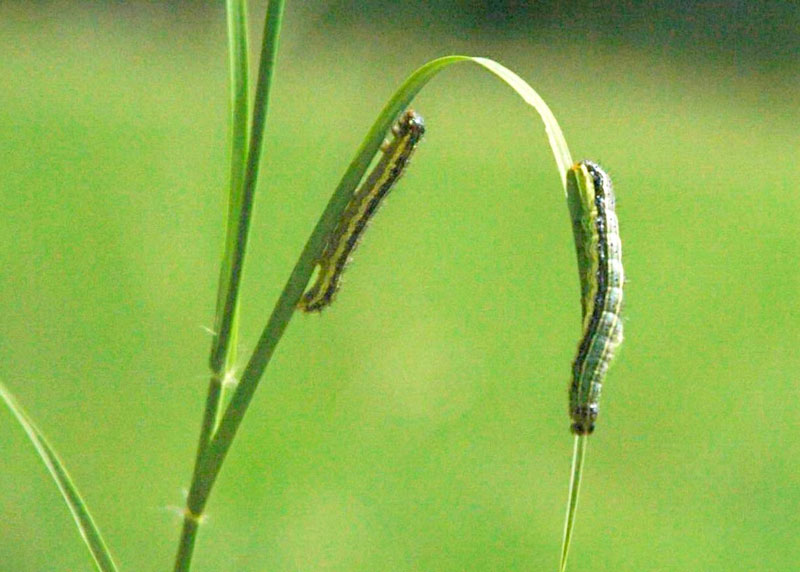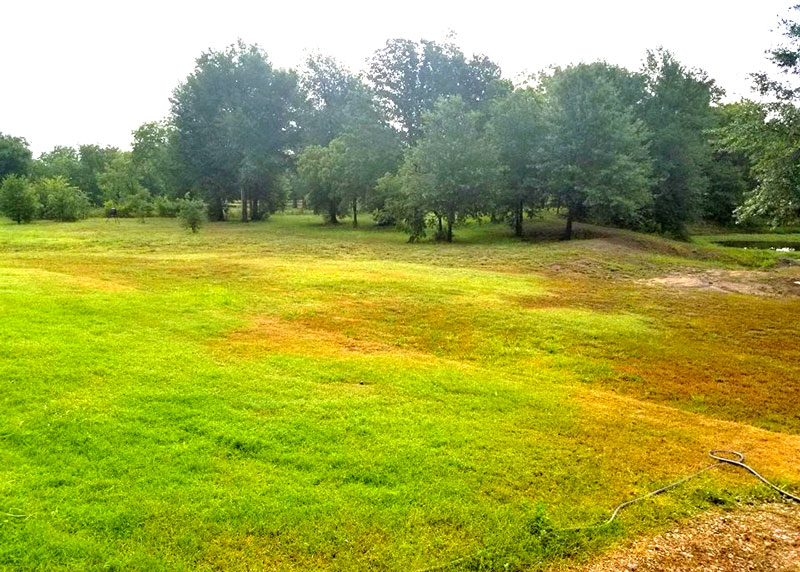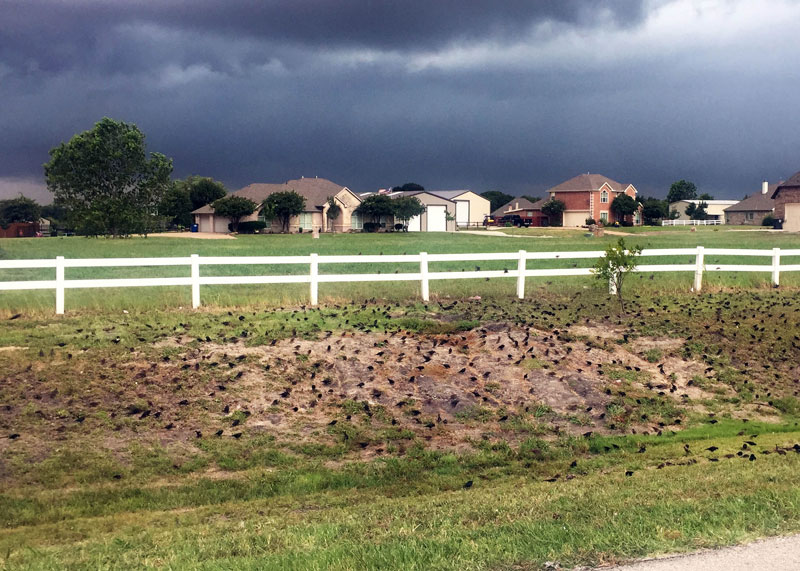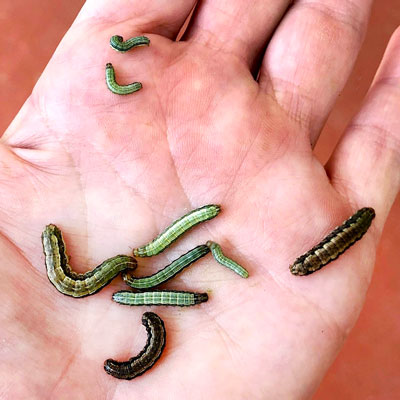Are armyworms back?

Nursery professionals, entomologists, agronomists, and hack horticulturists like me are getting the question: “Are armyworms back?”
Yes, indeed they are. Here are the quick facts of the matter.
• Armyworms are an agricultural pest in that they will attack farm fields as well as home lawns.

• They feed on bermuda lawns but not St. Augustine.
• The adult stage is a harmless-looking moth that you might not even have noticed.
• The chubby larvae are about an inch long, green bodies with brown or black stripes running the lengths of their bodies.
• They feed on grass blades, but they leave roots and runners, if present, unaffected.

• As armyworms gather, you may see hundreds of birds feeding in your lawn – dining on a main course of the larvae.
• Assuming the birds don’t eat all the armyworms, the infested areas of the grass will quickly turn brown as if dead.
• However, the turfgrass rebounds within a couple of weeks (assuming it’s given water and nitrogen) and greens up again long before winter.
• If you have recently overseeded your lawn with ryegrass the armyworms may be feeding on the young seedlings. Because they haven’t established strong clumps yet, the new grass seedlings probably won’t have the reserve power to regrow.
• That would also be true for new fescue plantings.
Most damage to lawns will be on bermudagrass turf. Since it’s a strong perennial grass with runners it will rebound quickly.
The bigger economic threat is to agronomic crops in farmers’ fields. Those crops are annual grasses, and once they’ve been devoured there is nothing left to resprout. That’s why farmers are concerned about armyworms.

Your remedies…
Texas AgriLife Extension specialists advise us to watch our lawns, landscapes, and gardens daily. Look for signs of browning grass that looks like drought damage (even though you’ve been watering). You may see motion in the grass.
• Look for the 1-1½ inches long green worms with black or brown stripes running the lengths of the bodies. They will have inverted white “Y’s” on the tops of their heads, one per caterpillar.
• Armyworms can be active in your lawn and landscape as moths, then eggs, larvae, and moths again for 15 or more days. One moth can lay hundreds of eggs. The eggs pupate to emerge as small unobtrusive white moths. The cycles can continue until frost.
• Conditions vary from region to region and summer to summer. Wet seasons that produce luxuriant growth of grass and weeds foster their development. Drought conditions suppress them.
Now you know. Be on the lookout for an army of worms. They may be in your neighborhood now.
